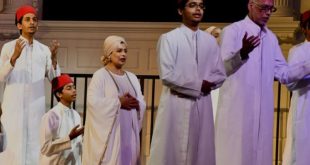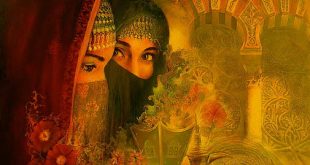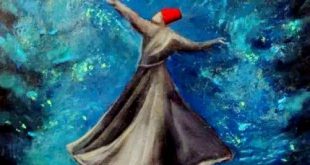 Of all feminine adornments, none charm and enchant more than nose ornaments. Be they rings or studs, there is something so striking about them when they grace a woman’s face. Just as the jewel in the crown gives the queen her splendour, a jewel in the nose of even a common damsel enhances her allure.
Of all feminine adornments, none charm and enchant more than nose ornaments. Be they rings or studs, there is something so striking about them when they grace a woman’s face. Just as the jewel in the crown gives the queen her splendour, a jewel in the nose of even a common damsel enhances her allure.
Perhaps the most famous Sri Lankan to wear one was Lady Karmini Corea, the beautiful wife of Sir Claude Corea who sported a little stud made of diamonds. The lady famously responded to a journalist who asked her why she wore a diamond in her nose: “I prefer diamonds to sapphires”. A charming woman, she played an important role in her husband’s career as a diplomat. Sir Claude went on to become President of the UN Security Council, a unique achievement for a Sri Lankan. All thanks to the lady with the diamond in her nose.
We often think of nose rings as having their origins in India, but this is a fallacy. They originated a long time ago in the desserts between the Nile and Euphrates. Besides they have a long history stretching back to thousands of years ago. Here are some little known facts about them:
Nose Ornaments originated in the Middle East
The earliest evidence for nose ornaments comes from the Middle East, showing that they were first known among the Semites. These are the folk who according to the Bible trace their ancestry to Shem, one of the sons of Noah who survived the great flood. They include Jews and Arabs both of whom trace their ancestry to Abraham through different mothers, Sarah and Hagar.The earliest mention of nose ornaments is found in the Bible. In Genesis 24:30 we read in the passage where Rebecca is chosen for bride for Isaac by Abraham’s servant :
“Now Rebecca had a brother named Laban who ran out to the man at the spring. As soon as he had seen the nose ring, and the bracelets on his sister’s arms, and had heard Rebecca tell what the man said to her, he went out to the man and found him standing by the camels near the spring”
The Arabs have also known of nose ornaments from time immemorial. According to the Qashqadaria Arabs – an Arab community settled in Central Asia – nose rings were worn by Hagar and Abraham was so charmed with them that it became a tradition among Arab women (History and Language of the Arabs of Central Asia. Guram Chikovani in Central Asia on Display. Ed.Gabriele Rasuly & Julia Katschnig. 2004). This is interesting since this community is an isolated one and would have preserved their ancient lore which Arabs elsewhere have lost due to numerous social reasons.
Nose ornaments were also known among pre-Islamic Arab peoples, among them the Nabateans who claimed descent from Abraham’s son through Hagar, Ishmael. Archaeological evidence shows that the womenfolk of the ancient Nabateans who were settled in Roman Palestine (C.1st-2nd century AD) wore nose rings. Such ornaments have been found in a Nabatean cemetery in Mampsis (Kurnub) (Der Goldschmuck von Mampsis und Oboda. Renate Rosenthal in Die Nabataer.1970).
The Alf Laylah Wa Laylah or Thousand and One Nights which assumed its present form around the 9th century or thereabouts also mentions the khizam or ‘nose-ring’. The ornament occurs in the tale of Maaruf. Here we are told how the loving husband presents his wife some ornaments brought forth by the Genie Abu Saadat, among them anklets of gold set with jewels, bracelets, ear-rings and a nose ring, after seeing which “her reason fled in consequence of her joy”. She had a pierced nose no doubt as the story goes on to say she put them on then and there.
This shows that the ornament survived well into Islamic times. Such ornaments were widely worn by Arab women in the olden days. The Ladies Monthly Museum 1827 in its ‘Description of the City of Bagdad, its inhabitants, customs & C’ referring to the women of the country around Baghdad tells us that “the nose is either adorned by a large ring, or a solid, flat, circular piece of gold stuck in one nostril, of the size, shape and appearance of the fancy gilt buttons worn by the English peasantry on their Sunday coats”.
As we have seen, nose rings were no doubt known among Arab women from very early times, but what of nose studs? Did these have an Arab origin too? Although it is commonly believed that such studs originated in India, it is possible that they too might have an Arab origin. Charles Daughty in his Travels in Arabia Deserta (1888) noticed Bedouin damsels wearing large silver nose-rings known as zmeyem on special occasions such as circumcisions, but on ordinary days wearing in their pierced nostril, a head of cloves. It is possible that in some Arab communities, the clove head was replaced with metal such as gold or silver which may also explain why nose-studs have been traditionally known in Hindustani as laung, literally ‘clove’. That some Arab women of old adorned themselves with nose studs is borne out by Charles Addison (Damascus and Palmyra. A Journey to the East.1838) who noticed some wild Arab women of the Baghdad caravan with “a hole bored in their noses, through which a silver stud was passed”.
They were very popular among Arab Women
All the evidence shows that nose ornaments were the most popular among Arab women who widely wore them in the olden days. Edward Lane in his Manners and Customs of the Modern Egyptians (1836) lists the nose-ring (khizam) in his description of the female ornaments of Egypt. He says that it was worn by both town and village women and was almost always passed through the right ala of the nose. Lady Anne Blunt in her Pilgrimage to Nejd (1881) records that she saw in the oasis town of Hail in Nejd (Eastern Saudi Arabia) nose-rings worn by the women here, much larger than she had seen at Baghdad and elsewhere, it being a thin circle of gold worn in the left nostril. A few years later we hear of Sir Richard Burton in his Narrative of a Pilgrimage to Al-Madinah and Meccah (1893) referring to the Bedouin women of Arabia wearing nose-rings of silver and gold.
Coming to more recent times, we have Harold Igrams in his Arabia and the Isles (1942) alluding to Yemeni women wearing nose-rings and Arab women in Pemba near Zanzibar having their noses adorned with small gold studs. The Duchess of St.Albans in her captivating work Where Time Stood Still. A Portrait of Oman (1980) refers to the left nostril of Omani girls being encrusted with silver flowers screwed into the nose, showing that nose-studs were commonly worn by girls and younger women. And Heather Ross in her Art of Bedouin Jewellery (1981) notes that in Saudi Arabia, nose rings or studs may be worn on either the left or the right side of the nose, depending on the tribe.
In fact, nose-rings are said to be still worn in the rural regions of Arabia, Iraq and Syria (Arab and Islamic Silver. Saad Al- Jadir.1981), by many of the Bedouin women of Jordan (See The Art of Jordan. Ed. Piotr Bienkowski.1991) and in the desserts and oases of Egypt (Enchanted Jewelry of Egypt. Azza Fahmy.2007).
What this shows is that nose ornaments have been retained in the outlying traditional parts of the Arab world which the modern urban areas have dispensed with due to Western influence. This speaks for nose ornaments being a quintessentially Arab ornament.
Other Muslim peoples were quick to adopt it and so to this day nose ornaments remain popular among Non-Arab Muslim women of North Africa and the Indian Subcontinent. The dusky belles of Sudan, Eritrea and the Swahili-speaking lands may still adorn themselves with nose rings and as we all know such ornaments are widespread among the Muslim women of India, Pakistan and Bangladesh, being especially worn on their wedding day and after as a symbol of married life.
They were introduced to India by Muslims
Nowhere in ancient Indian literature do we come across references to nose ornaments, neither in the north of India or the South. They do not figure in the Mahabharata or Ramayana, or in ancient Tamil works of the Sangam age like the Cilappatikaram (2nd century AD) which is replete with feminine adornment but are conspicuous for its absence of nose ornaments.
As shown by Dr. A.S.Altekar in his monumental work, The Position of Women in Hindu Civilisation.(1938), nose ornaments were unknown in India throughout the entire Hindu period and was clearly borrowed from the Muslims. They evidently gained popularity during the Moghul period from about the early part of the 17th century when we come across paintings such as the Hur Khanum Mughalani (The Moghul Lady Hur) C.1625 showing a nose-ring. Still, there are those who believe that the nose-ring was introduced to India as early as the 8th century during the Arab invasion of Sind (Dance of the Peacock. Jewellery Traditions of India. Usha Bala Krishnan and Sushil Kumar 1999). That this was certainly the case in the south of India is seen by the fact that they were well established there before the Moghul period. The famous Moroccan traveller Ibn Battuta (14th century) says of the Muslim women of Honavar in the South-Western coast of India “They are beautiful and chaste. Each of them wears a ring of gold in her nose”.
They were widely worn by local Muslim Women
The great majority of Sri Lankan Muslims are Moors who trace their ancestry to Arab merchants who espoused local women. That they should have inherited the Arab love for the nose ring goes without saying. Yes, the Moor women of old did wear nose ornaments including a kind of nose drop descending from the septum, one of the many adornments these highly cultured women adorned their persons with. A.T.Shamsidin in his paper Ornaments worn by the Moorish women of Ceylon published in The Orientalist of 1885-1886 gives a list of over 30 different ornaments worn by the Moor women of his time. This included the mukkutti (A nose ornament made of gold, its end furnished with pendants of pearls and set with precious stones, invariably worn on the right ala of the nose) and nattu (A flat nasal trinket appended to the septum of the nose by means of a gold screw passed through an orifice formed for the purpose. The ornament falls flat upon the upper lip, having its broad end furnished with pendants of pearls and its surface set with precious stones).
William Goonetilleke in his paper The Disfiguring of the human body contributed to the The Orientalist of 1890 observed that Ceylon Moor females perforated the right wing of the nose and the lobe of both ears, showing that nose-piercing was as common as ear-piercing among them. Needless to say, the Moor women of old had inherited the ornament from their Arab forebears.
Nose studs known as mukutti are still worn by some Moor women of Colombo, especially in areas such as Dematagoda, Maligawatta and Slave Island. They are also said to have been commonly worn by the Moor women of the Eastern areas such as Ampara District. Today, however one hardly sees the Moor women of the Eastern areas wearing them as they seem to have declined in the 1950s and 1960s. In the Eastern Moor folk song Paalam Paakka Povom (C.1920s) we find the husband advising his wife to put on a shining nose stud (mukkutti nalla palir palir enkave), which shows how common it must have been in the olden days among the Moors of that part of our country.
Today’s mukkutti worn by some Moor women differs from the elaborate ornament described by Shamsidin as ‘furnished with pendants of pearls and set with precious stones’ as it simply comprises of a little gold stud or a gem set in a small base of gold. Nose rings on the other hand seem to have gone out of vogue and are hardly if ever worn today though they were in the past, especially as part of the Moor bride’s wedding dress. Simon Casie Chitty gives a detailed description of the beauty of the Moor bride in his Ceylon Gazetteer (1834) as follows:
Her hair is neatly braided in a knot behind, adorned with handsome sprigs of gold flowers set with precious stones, and long pins in the form of an arrow passed through the knot crossways. She wears earrings and another ring is passed through the nose set with pearls; many gold chains are suspended round her neck; her arms are decorated with bracelets, her fingers with rings and her feet and toes with diverse tinkling silver ornaments. Her outer garment is of silk or embroidered, and envelopes her entirely, and her eyelids and nails are dyed.
Moor women also wore it on other occasions.R.L.Brohier in is article Happy families of Old Colombo published in The Ceylon Observer Pictorial of 1963 says of the Moor women of an earlier period:
“When they did travel in a vehicle on the public street, they were hidden from view by linen or silken blinds which permitted the passengers to peep through chinks, showing a glittering nose-ring”
As to why this beautiful ornament declined in popularity among Moor women, one reason may be due to the mistaken belief that the practice of nose-piercing is unislamic as claimed by texts such as the Fathud-Dayyan There however exists no valid Islamic basis for this ruling and even the Fathud-Dayyan, a late 19th century Arabu-Tamil work by Mapillai Alim has thought it fit to concede that “no one has objected to the wearing of rings and fulak (nose pendants hanging from the septum) on noses that have been previously pierced”.
Another reason was probably the desire of the more ethnocentric Moors of the post-independence period to disassociate themselves from the Tamils, among whom nose ornaments had become a popular custom and a symbol of the married bliss of a woman. What is so sad is that they did not realize that the ornament had its origins in their Arab ancestors and that the Tamils borrowed it from them much later.
Tamil women wore nose pendants of Arab origin
Interestingly nose ornaments found their biggest fans not among the Moors who were heir to them, but among the Tamils of Sri Lanka.Yoga Vallipuram in her insightful article Traditionally Yours published in the Times of Ceylon Annual. 1964 says that the mookuthi or nose stud in shapes like crescent moon or star was once considered an essential ornament for married Tamil women. “Today” she says “only girls brought up in orthodox families have their noses pierced for these studs”. However, she adds: “But if today’s bride does not wear the mookuthi, she certainly does the tiny droplet called pulakku which hangs from the end of her nose, just above her lip”.
There can be no doubt that the pulakku worn by our local Tamil ladies had its origins in the Arab bulakh, given that the Tamil language turns an initial b to a p when borrowing from foreign tongues. Captain F.M.Hunter in his Account of the British Settlement of Aden in Arabia (1877) refers to the Bulakh which Arab women wear as ‘a flat gold crescent, chased and stamped, studded with pearls, having a fringe of pearls on the outside; it is worn suspended from the central membrane of the nose by a semicircular wire which joins the horns of the crescent’. In support we also have Jean Baptiste Tavernier’s Six Voyages en Turquei, en Perse et aux Indes (1679) which refers to Arab women boring “the separation between the two nostrils, where they wear hollow rings”.
This ornament worn in the septum of the nose was also known in India. The Qanoon-e-Islam compiled by Juffur Shurreef (1832) in its List of Jewels or Ornaments worn by Moosulman Women refers to the ornament worn in the centre cartilage of the nose as boolaq. Another name by which this ornament seems to have been known was fulak which is the name by which the author of the Fathud Dayyan refers to it. As we read from Shamsiden’s account of Moor jewellery, it was also called nattu which he described as a flat nasal trinket appended to the septum of the nose by means of a gold screw passed through an orifice formed for the purpose.
It is remarkable that the Moors of Arab origin should have called the ornament by a Hindustani term that meant something else, for nattu comes from the Hindi-Urdu word nath meaning a large nose ring while the Tamils who are Hindus should have preserved the Arabic usage for the same ornament in a slightly corrupted form, turning the Arabic bulakh into pilakku to suit the peculiarity of their tongue.
Finally what we can conclude from all this is that a cultural item can be transmitted from one people to another so completely that its memory is forgotten to the point that the original lenders do not know that it were they who bestowed it nor the receivers know from whom they borrowed it. History certainly has some strange twists and tales to tell, don’t you think?
Extracted from Serendib Culture Club FB Page (Courtesy: Asiff Hussein)
 Sri lanka Muslims Web Portal Diversity and Inclusiveness
Sri lanka Muslims Web Portal Diversity and Inclusiveness



